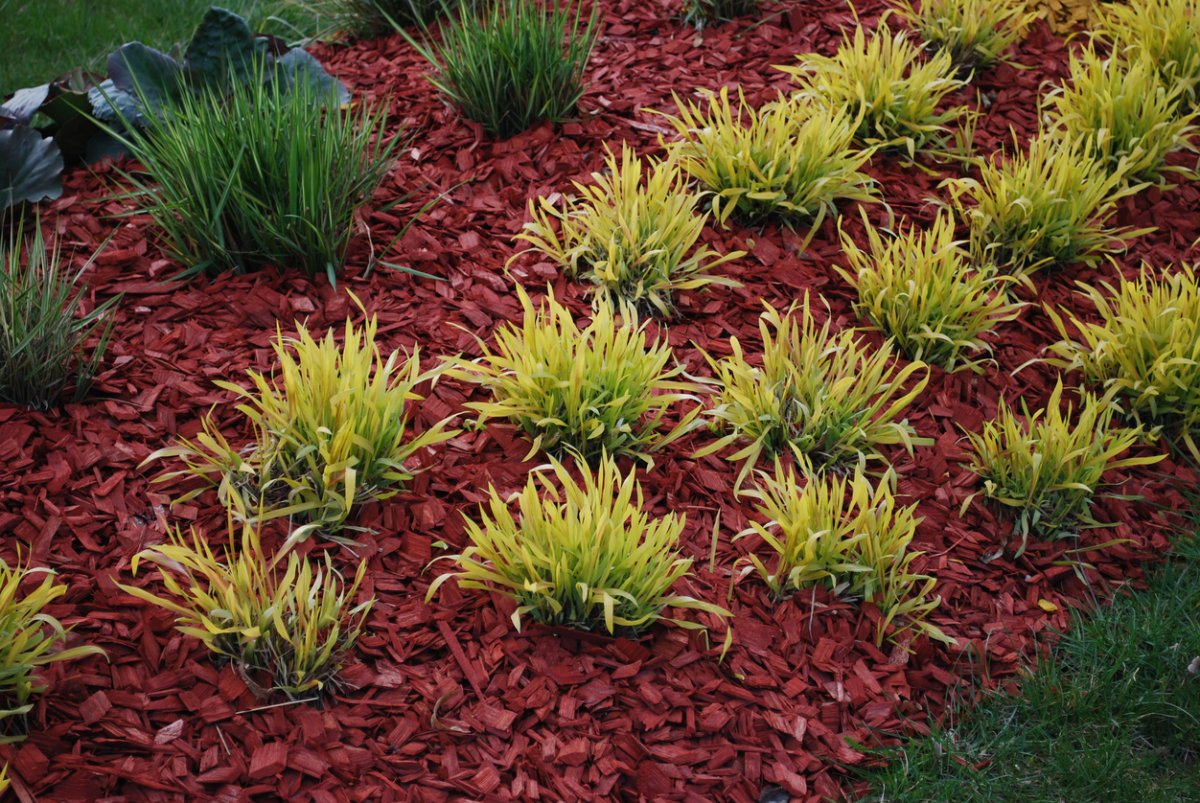

We may earn revenue from the products available on this page and participate in affiliate programs. Learn More ›
Q: I am planning a few landscaping updates, including a new flower bed around the mailbox and a perennial border on our property line. Once the plants are in, I want to mulch the beds. The problem is, the areas are irregularly shaped and I’m not sure how much mulch I need to buy.
A: Adding mulch to flower beds is a terrific idea. Mulch protects soil from erosion, insulates plant roots from temperatures that are too hot or too cold, and helps conserve moisture. Organic mulch, like wood or bark mulch, pine needles, straw, and compost, also nourishes the soil as it breaks down over time. The key is to add just the right amount of mulch to your beds, which is why you seem to be asking the question in the first place. Laying down too much mulch suffocates plant roots with excessive heat and moisture. Below are a few considerations that will help you determine how much mulch is right for your landscape.
RELATED: How To: Make Mulch from Scratch
Mulch belongs just about anywhere you have plants.
Wherever there are plants, mulch can help. Potted plants, flower beds, shrub and perennial borders, and vegetable gardens all benefit from mulch’s ability to insulate roots, retain moisture, and smother weeds.
Mulch in the landscape also adds ornamental value, and gives property a clean, uniform look. Home gardeners might choose an earthy mulch hue that blends into the landscape naturally, or a dyed mulch that adds a pop of color. In a veggie garden, mulch is useful in preventing weeds, conserving moisture—a mulched garden doesn’t have to be watered as frequently—and keeping the gardener’s feet from tracking mud.
In potted plants and container gardens, which usually need to be watered frequently because they dry out quickly, mulch keeps soil moist so it doesn’t have to be watered as often. It also provides a more attractive, “finished” look than bare soil. Mulch comes in such a range of materials, textures, and colors that it’s easy to find one that complements the pottery and plants on your property.
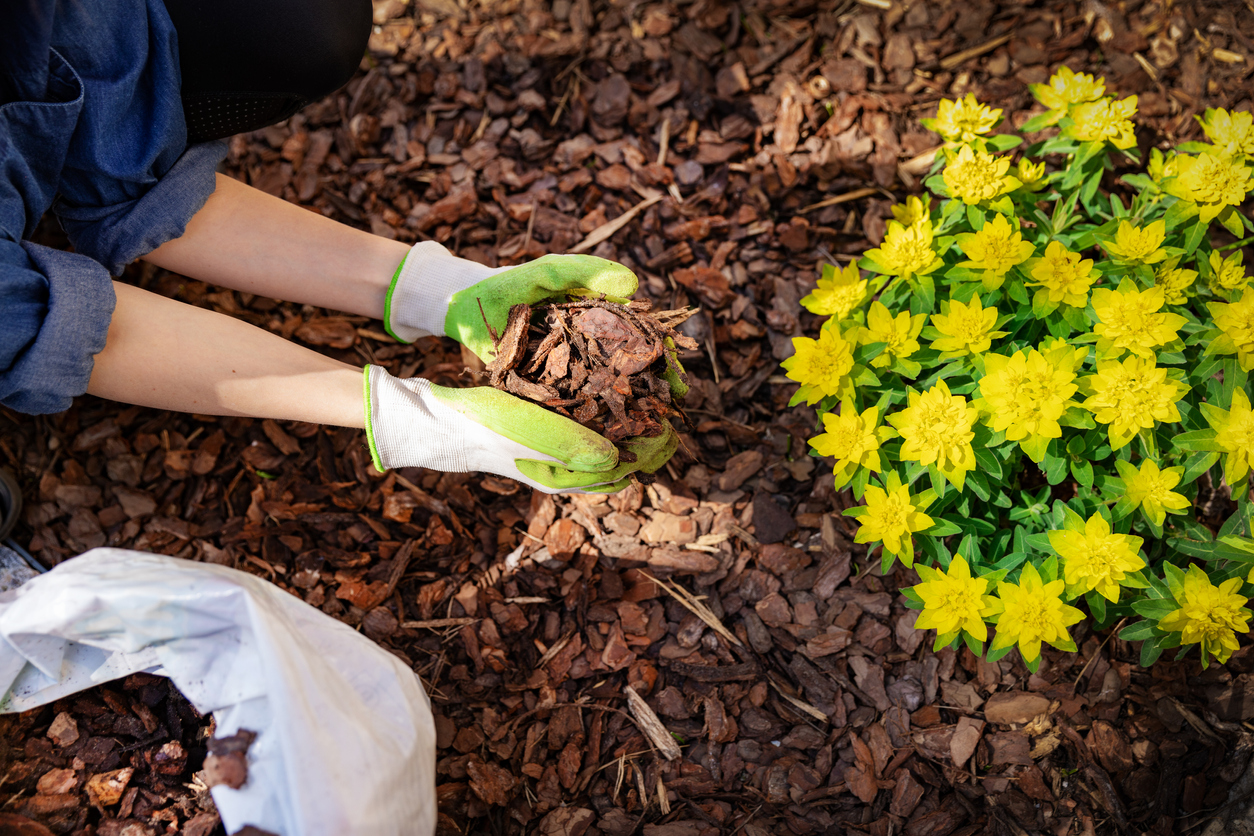
Select a mulch material that makes sense for your property.
In addition to the organic types of mulch noted above, other popular materials from which mulch is made include synthetic materials, such as rubber or polypropylene, and stone. For those who prioritize plant health and soil quality in their gardens, organic mulches are generally the best options. Mulching with organic matter such as bark and compost adds nutrients to the soil and improves its composition as these organic materials decompose.
Stone mulch is a terrific option for pathways, potted plants, and gardens. Its main disadvantage is that it retains heat, which may be problematic if, for example, you frequently walk barefoot on that surface—ouch! Mulches made from rubber and other synthetics can protect the soil from temperature swings and moisture evaporation, but it does nothing to improve the soil.
Fine mulch materials like compost and mini bark nuggets decompose faster than those composed of coarse particles. For this reason, these fine mulches are excellent solutions for intensively managed garden spaces such as annual flower beds and herb gardens. Bark and other coarse mulches break down slowly, which is why they are good options for permanent plantings such as shrubbery beds and tree rings.
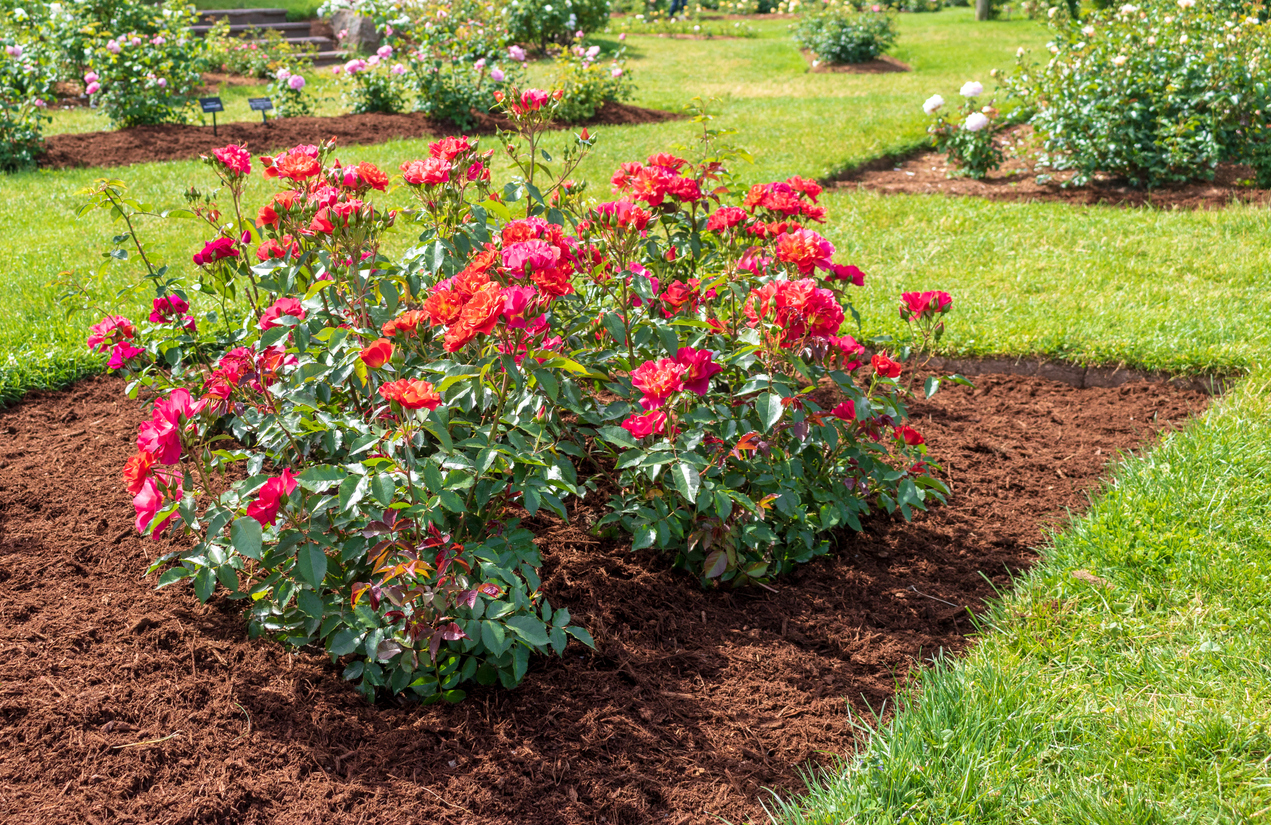
Calculate the square footage of your garden beds.
In order to figure the amount of mulch you’ll need, calculate the square footage of the area to be mulched. To make the process easier, break up a large landscape into a series of rectangles, circles, and triangles. Find the areas of rectangular spaces by multiplying length times width. If the area is triangular, multiply the base times the height and divide by two. For circles, multiply radius x radius x 3.14. If the space you are measuring is irregularly shaped, break it up into smaller, workable shapes. For instance, a figure 8 is two circles, an L shape is two rectangles, and a curved corner bed can be broken into a series of triangles. Then, add together the square footage of all of the areas.
After determining the square footage of the area to be mulched, convert the area in square feet into volume of mulch in cubic feet. To do that, you’ll first have to figure out how deeply you want to mulch the area. Compost is typically applied as mulch at a depth of 1 to 2 inches. Wood mulch and bark products should be applied 2 to 4 inches thick.
Multiply the area in square feet by the required depth, in a fraction (or decimal) of a foot.
1 inch = 1/12, or .083 foot
2 inches = ⅙, or .166 foot
3 inches = ¼, or .25 foot
4 inches = ⅓, or .33 foot
For example, if you have a 50-square-foot plot that you want to mulch with compost to a depth of 2 inches, you’d multiply 50 times .166, which means you’d need 8.3 cubic feet of compost.
RELATED: The Dos and Don’ts of Mulching the Garden
Mulch is sold by the cubic foot or cubic yard.
Bagged mulch is usually sold in 2- or 3-cubic-foot bags. To figure out how many bags of mulch you need, divide the total number of cubic feet needed by the size of the bag (2 or 3 cubic feet). Be mindful that mulch bag sizes can vary by store—or even by brand—which is why it’s important to confirm the size of the bag before placing an order.
Bulk mulch is sold by the cubic yard. A cubic yard is 3 feet tall, 3 feet wide, and 3 feet deep, or 27 cubic feet. If you’re buying mulch in bulk, divide the total number of cubic feet needed by 27 to determine how many cubic yards to buy.
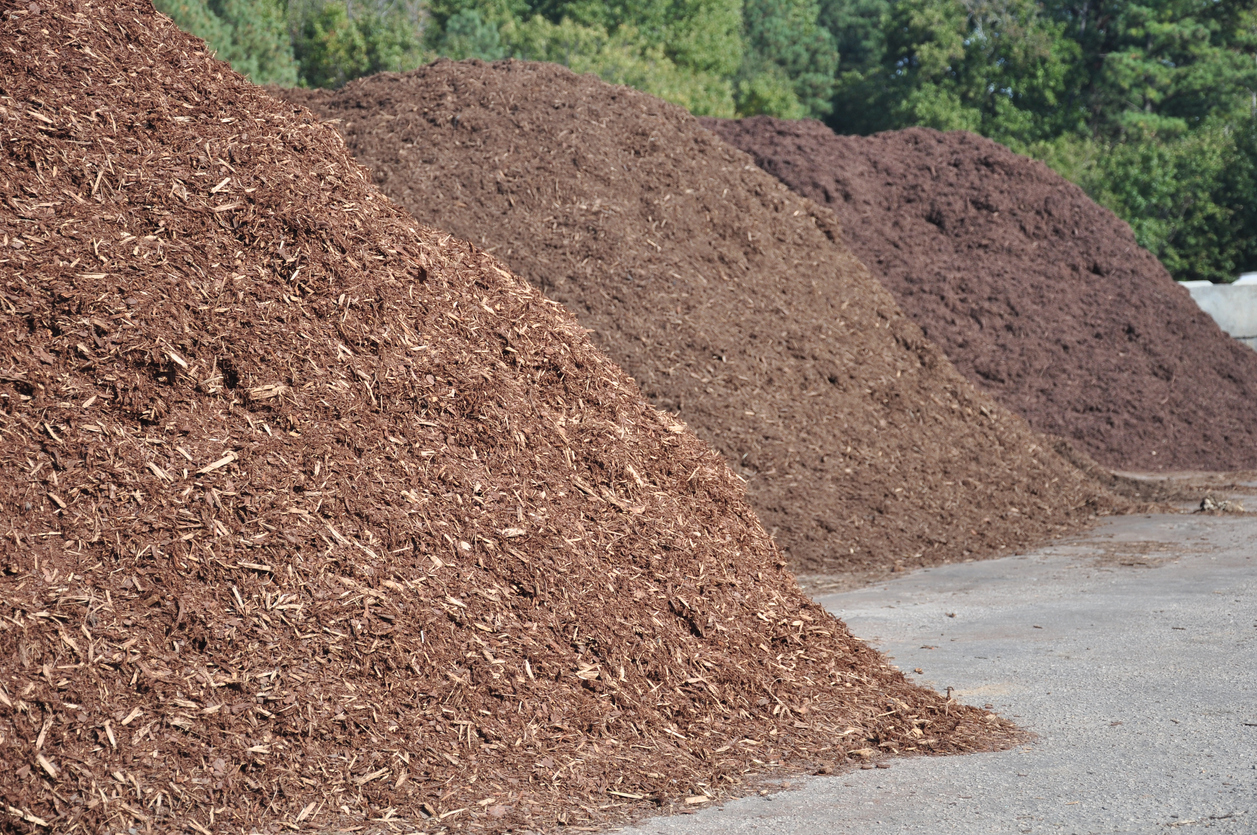
Consider the costs of bagged versus bulk mulch.
Once you’ve calculated how much mulch you’ll need, the next decision is whether to purchase it by the bag or in bulk. There are advantages and disadvantages to both bulk and by-the-bag purchases.
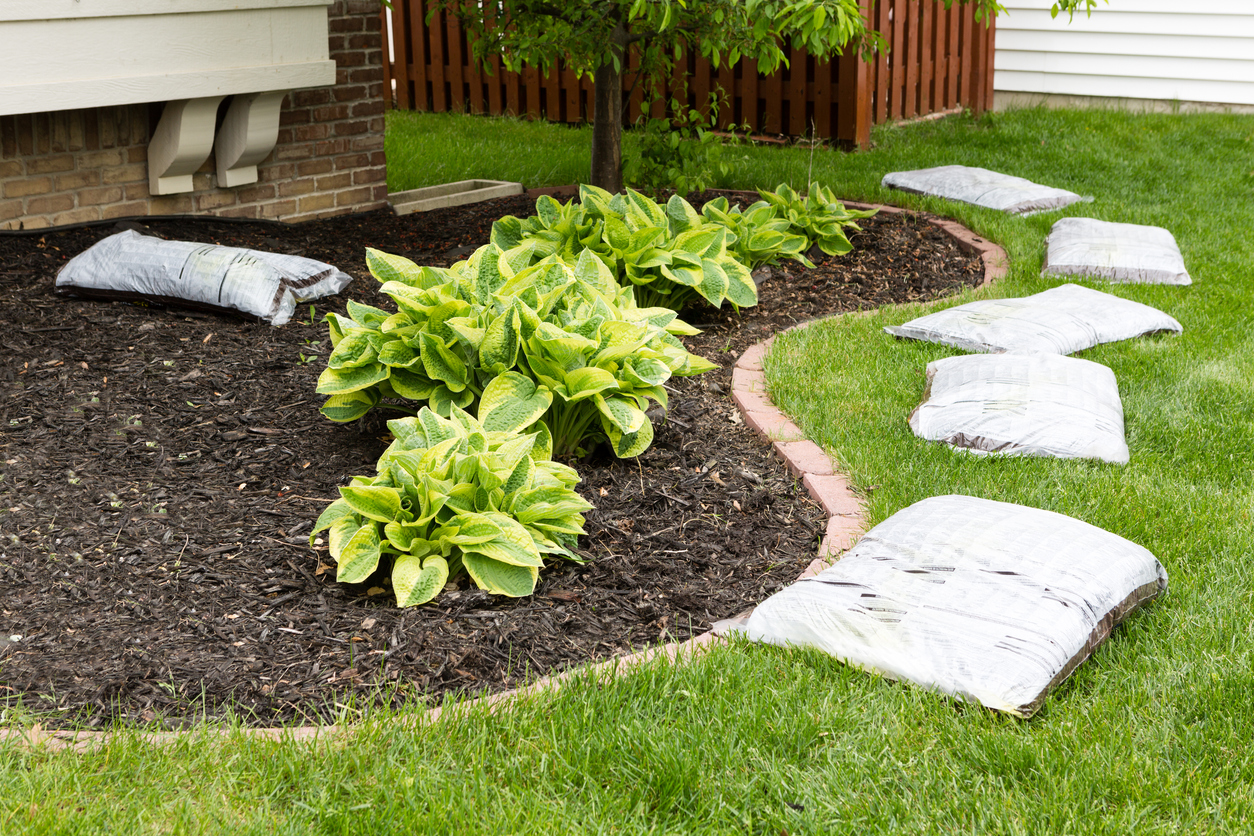
Bagged mulch is all you need for small spaces and touch up work, but it can also be convenient for larger projects. It is easy to move the bags around the yard, and you don’t have to worry about shoveling mulch from a pile in your driveway to the intended beds. With bags, there’s no mess left behind to clean up afterwards.
Bulk mulch is often cheaper to buy than bagged mulch. It’s more eco-friendly because it reduces plastic waste. A whole batch of bulk mulch will also look the same, whereas bagged mulch may show some variation in appearance from bag to bag. The biggest downside to buying bulk has to do with transporting it: Do you have a truck to get it from the garden center to your home, and if not, does the center’s delivery fee cost more than the money you save buying mulch by the yard? Another transportation issue to think about is how you’ll get a yard or more of mulch from your driveway (or wherever it’s delivered) into your garden beds. Some gardeners won’t mind multiple trips across the property with a wheelbarrow, and others may not have the inclination or physical ability to do so.
